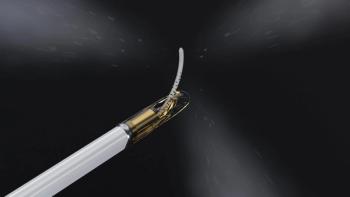
Brain anomalies on fetal MRI call for postnatal imaging backup
Posterior fossa anomalies detected on fetal MR imaging should be confirmed with postnatal imaging, according to a study in the June American Journal of Roentgenology. Investigators from the U.S. and Canada found significant discrepancies between fetal and postnatal posterior fossa findings on MRI.
Posterior fossa anomalies detected on fetal MR imaging should be confirmed with postnatal imaging, according to a study in the June American Journal of Roentgenology. Investigators from the U.S. and Canada found significant discrepancies between fetal and postnatal posterior fossa findings on MRI.
Posterior fossa dysgenesis falls into two general categories: small posterior fossa with crowded contents and anomalies that occur in normal or enlarged fluid spaces, said Dr. Catherine Limperopoulous and colleagues at Children's Hospital Boston, Harvard Medical School, Montreal Children's Hospital, and McGill University.
Prenatal diagnosis is challenging, however, and no universal classification system exists for posterior fossa anomalies (AJR 2008;190:1637-1643).
For their retrospective review, the authors identified over a five-year period 90 women who were referred for counseling for suspected fetal posterior fossa anomalies. MR imaging was performed on 1.5T units. The prenatal sequences included multiplanar single-shot fast spin-echo T1-weighted and T2-weighted imaging. The postnatal imaging protocol included sagittal and axial spin-echo T1-weighted sequences, axial fast spin-echo T2-weighted sequences, and susceptibility sensitive imaging.
Potential diagnostic categories were Dandy-Walker malformation, inferior vermian hypoplasia, cerebellar hypoplasia, rhombencephalosynapsis, mega cisterna magna, retrocerebellar arachnoid cyst, and cerebellar hemorrhage.
Of the 90 cases, 25 were found to have normal posterior fossa structures based on fetal MR results. Abnormalities suspected on fetal sonography in 60 cases were confirmed by fetal MRI. The most common anomalies were inferior vermian hypoplasia and Dandy-Walker malformation.
Of those 60 cases, 42 were live-born infants. The authors noted complete agreement between fetal and postnatal MRI diagnosis in 59% of the cases. In 15% of the cases, however, posterior fossa anomalies diagnosed by fetal MRI could not be confirmed by postnatal MRI.
"Diagnostic categories of infants with normal findings on postnatal MRI included inferior vermian hypoplasia in five infants and mega cisterna magna in one infant," the Limperopoulous group said. "Lower mean gestational age at the time of the fetal MRI was associated with a greater likelihood of discrepancy between fetal and postnatal MRI findings."
The authors pointed out the importance of keeping in mind this discordance between pre- and postnatal imaging, particularly if the patient was considering terminating the pregnancy. In the study's patient population, 18 pregnancies were terminated electively. Results showed that one-third of the terminated pregnancies had isolated inferior vermian hypoplasia.
"Caution is warranted during counseling for inferior vermian hypolasia, particularly if the lesion is an isolated finding, because a good outcome is to be expected in the majority of cases," Limperopoulous and coauthors said.
While discrepancies occur, prenatal MRI does offer improved specificity over screening fetal sonography. The Limperopoulous group's MRI studies found associated extracerebral anomalies, such as cardiac malformations, in 23% of cases. Postnatal MRI was able to spot small lesions that were not seen on fetal MR.
Because of the limited number of patients, the authors stated that they could not conduct a more targeted analysis of MRI's sensitivity and specificity. They urged, however, that postnatal studies be performed in all cases of suspected posterior fossa anomaly on fetal MRI, either to rule out false positives or possibly detect cerebral lesions that may be too small to diagnose early in gestation.
For more information from the Diagnostic Imaging archives:
Newsletter
Stay at the forefront of radiology with the Diagnostic Imaging newsletter, delivering the latest news, clinical insights, and imaging advancements for today’s radiologists.


























